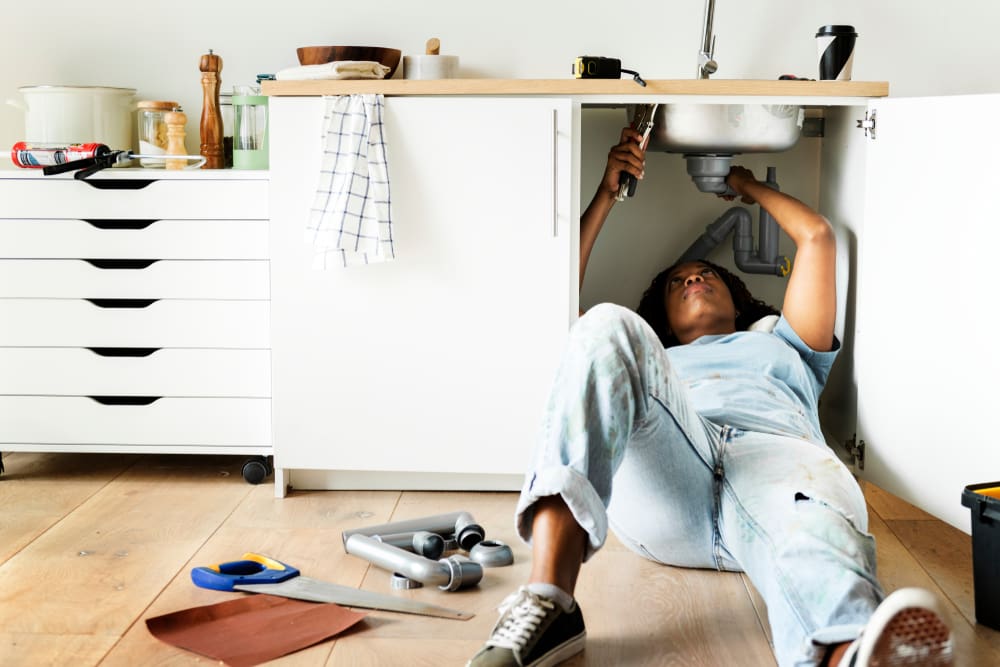In today’s economic landscape, finding ways to cut costs without sacrificing quality of life has become more crucial than ever. One of the most effective strategies for achieving this is by acquiring new skills that allow you to undertake maintenance and repairs around your home, specifically in plumbing and wall repairs.
This guide aims to not only introduce you to the basics of home plumbing and wall repairs but also to demonstrate how mastering these skills can lead to significant savings over time. By diving into the essentials of these handy skills, you’ll be empowered to tackle common issues that would otherwise require costly professional intervention.
The importance of DIY plumbing sills
Understanding your home’s plumbing system
Before you can save money through DIY plumbing, it’s vital to have a foundational understanding of your home’s plumbing system. This includes knowing how water enters and leaves your home and identifying the main components such as pipes, drains and fixtures. A basic knowledge of water pressure, the function of valves and how to turn off the main water supply in emergencies is crucial.
Common plumbing repairs you can do yourself
– Fixing leaky faucets: A dripping faucet not only wastes water but can also increase your water bill over time. Learning to replace worn-out washers or cartridges can solve most leaky faucet issues.
– Unclogging drains: Clogged drains are among the most common plumbing problems. Using a plunger, plumber’s snake or natural cleaning solutions like baking soda and vinegar can often clear clogs without the need for professional help.
– Toilet troubleshooting: Running toilets can be fixed by adjusting or replacing internal components like the flapper or fill valve, tasks that are straightforward and require minimal tools.
Mastering Wall Repairs
Identifying types of wall damage
Wall damage can range from small cracks and holes to larger areas of damage due to water or impact. Understanding the extent and type of damage is the first step in determining the appropriate repair method.
Simple wall repair techniques
– Fixing small holes: Small holes — often caused by nails or screws — can be easily fixed with spackle or joint compound, followed by sanding and painting.
– Repairing cracks: Hairline cracks can be filled with caulk or plaster, while larger cracks may require tape and joint compound before being sanded smooth and repainted.
– Addressing water damage: For walls with water damage, it’s essential to first address the source of the moisture before replacing any damaged drywall and insulation to prevent mold and further damage.
Tools and materials you’ll need
Having the right tools and materials is essential for effective DIY plumbing and wall repairs. For plumbing, essential tools include a wrench set, plunger, plumber’s snake and Teflon tape. For wall repairs, you’ll need spackle or joint compound, sandpaper, a putty knife and paint for touch-ups. Investing in quality tools can save money in the long run by enabling you to perform a wide range of repairs.
The financial benefits of DIY home maintenance
Savings on labor costs
The most immediate benefit of DIY home maintenance is the savings on labor costs. Professional plumbers and handymen charge not only for the materials used but also for their time. By doing repairs yourself, you can save a significant amount of money.
Preventive maintenance
Regular maintenance can prevent small issues from becoming major problems. For example, addressing a slowly draining sink immediately can prevent a complete blockage that might require expensive professional cleaning. Similarly, patching small cracks in walls can prevent the need for more extensive repairs later.
Learning home plumbing and wall repairs is not just a way to save money; it’s also a deeply satisfying pursuit that can enhance your sense of independence and confidence in your ability to maintain and improve your home. While not every repair job is suited for DIY, many common issues can be effectively addressed with a bit of knowledge and the right tools.
By investing time in learning these skills, you’re not just saving on immediate costs but also equipping yourself with the ability to manage your home’s maintenance needs more proactively and cost-effectively. Remember, the key to successful DIY repairs lies in recognizing your limits and calling in professionals when necessary to ensure the safety and integrity of your home.
This story was created using AI technology.















